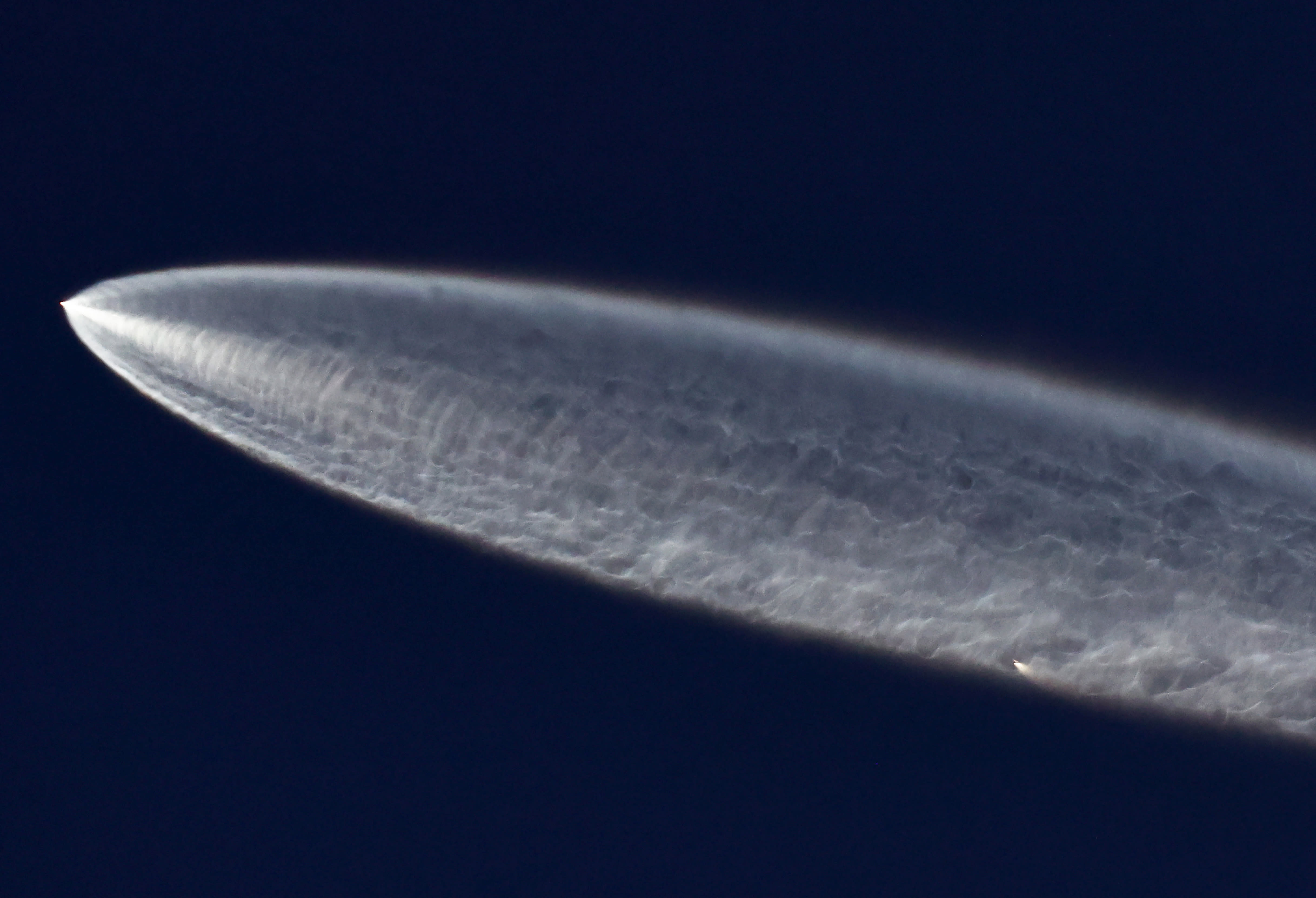
A SpaceX Falcon 9 rocket flies carrying a payload of 22 Starlink internet satellites into space after launching from Vandenberg Space Force Base, as seen from Los Angeles, on March 18, 2024.
Mario Tama | Getty Images
SpaceX’s Falcon 9 rocket is grounded, pending an incident investigation, after an inflight failure — a rare misfire for the company’s workhorse vehicle.
The mission, known as “Starlink Group 9-3,” launched from California’s Vandenberg Space Force Base on Thursday evening and was carrying 20 satellites bound for low Earth orbit.
The rocket’s lower first stage, or booster, operated as expected before returning to land. But the rocket’s upper second stage failed to reignite its engine as planned and was destroyed, SpaceX CEO Elon Musk confirmed.
“Upper stage restart to raise perigee resulted in an engine RUD for reasons currently unknown,” Musk wrote in a post on social media. RUD, or “rapid unscheduled disassembly,” is a term SpaceX uses to refer to an explosive or destructive event.
Falcon 9 is grounded until the Federal Aviation Administration signs off on SpaceX’s investigation of the incident, the federal regulator confirmed.
“The FAA will be involved in every step of the investigation process and must approve SpaceX’s final report, including any corrective actions,” the agency said in a statement to CNBC.
The Starlink mission was the 69th Falcon 9 launch of the year — with the company averaging a blistering pace of a launch every two to three days in 2024 — but the investigation will likely delay launches planned in the weeks ahead, including two crewed missions: The private Polaris Dawn and NASA’s Crew-9.
SpaceX still deployed the 20 Starlink satellites, but noted that the second stage engine failure means the satellites are in “a lower than intended orbit.” As of early Friday morning, the company said that it had made contact with five so far and was trying to use the satellites’ onboard thrusters to climb higher in orbit to avoid burning up in the atmosphere.
“We’re updating satellite software to run the ion thrusters at their equivalent of warp 9,” Musk wrote, adding that “this will probably not work, but it’s worth a shot.”
A SpaceX Falcon 9 rocket lifts off on the USSF-124 mission for the U.S. Space Force and Missile Defense Agency in Cape Canaveral, Florida, on Feb. 14, 2024.
Joe Skipper | Reuters
Falcon 9 has been on an unrivaled run of success for nearly a decade, chocking up more than 300 consecutive successful orbital launches since its previous inflight failure in June 2015, during the NASA cargo mission CRS-7.
In total, SpaceX’s Falcon 9 has launched 354 missions to orbit – with more than 300 of those featuring successful landings and resulting in the reuse of rocket boosters over 280 times.

